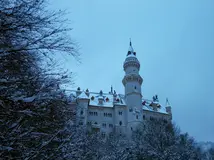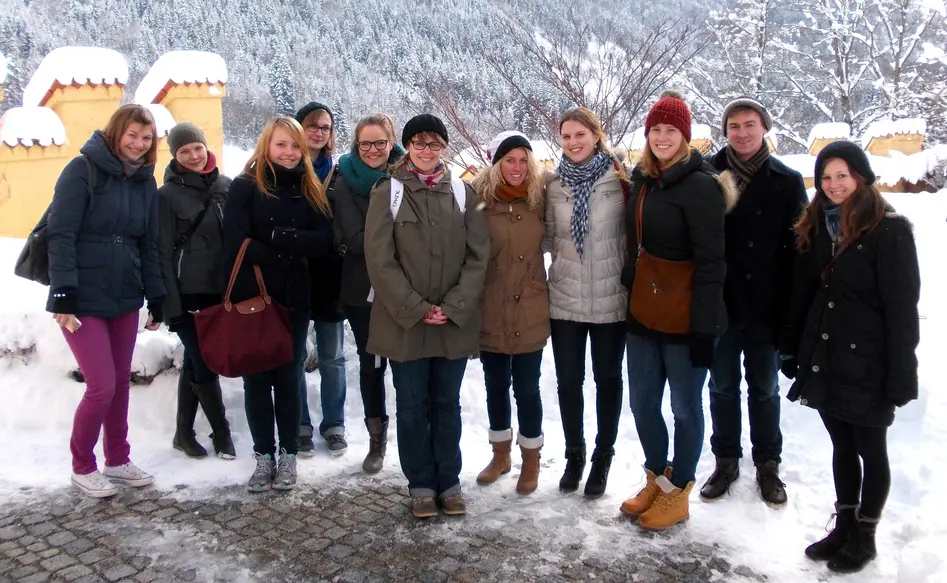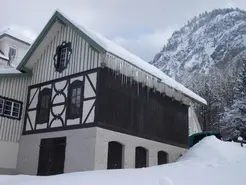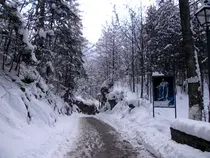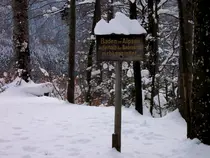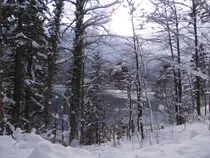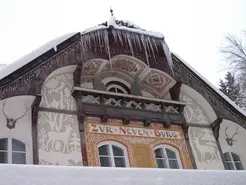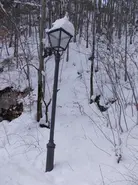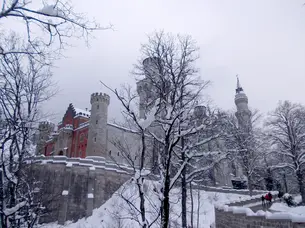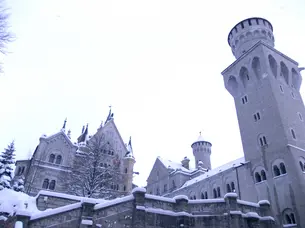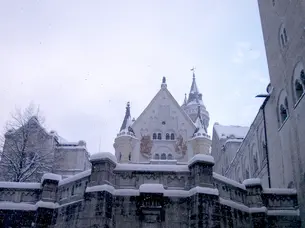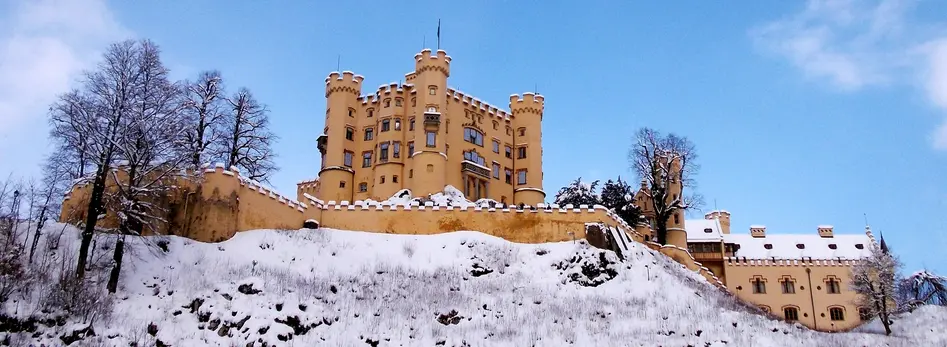Exploring the Castles Neuschwanstein and Hohenschwangau, Bavaria (Germany)
By Curtis Middlekauff (Sewanee, Tennessee)
On February 9, 2013, participants of the seminar "Germans in Canadian Literature and Culture" went on a field trip to Southern Bavaria to explore two castles of 'mad' king Ludwig II with their teacher Dr. Nicole K. Konopka.
Our trip began very early on a wintry Saturday morning. Snow was everywhere and the thermometer had dropped well below zero, but this helped to make our experience all the better, turning the visit to the castles into a bit of a winter dream.
This sort of wintry day also fit very well into our topic of Canadian Literature: many think of Canada as having continuous winter and snow, and the wilderness and greenery we saw on the way to the castles and at the castles themselves, together with the feeling of being slightly far away from major places of civilization were all quite "Canadian" because of Canada's vast swaths of land.
The castles themselves could be directly related to the first novel we read in our seminar, The Stone Carvers (2001) by Jane Urquhart. The Canadian town in which the story takes place was founded by German immigrants who receive support from the Bavarian King Ludwig II in the 1860s.
In the novel, the King is busy building his castle Schloss Neuschwanstein, and sends aid to the settlers because he is intrigued by the wild environment in which the settlers must live. When we saw the placement of the actual castle Neuschwanstein, it became quite clear that Ludwig liked a natural setting, and the symbolism between this castle stuck up on a mountain and the novel's great church stuck up in the middle of Canada were also apparent.
Overall, this trip really served to heighten my enjoyment of this class on the intersections between German and Canadian cultures, and, of course, to make my year abroad that much better.
More pictures from the trip:
